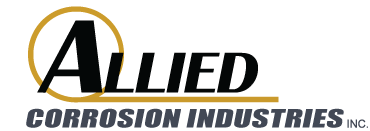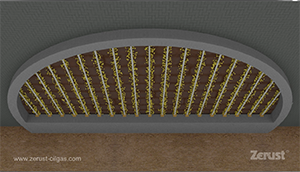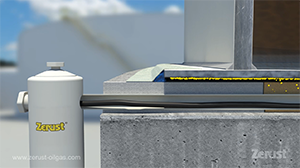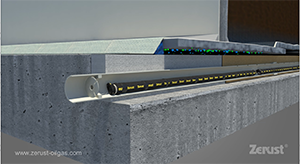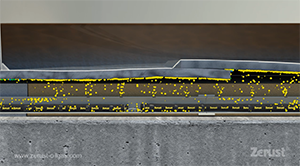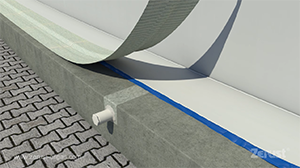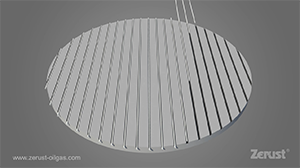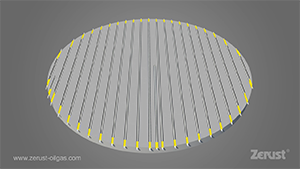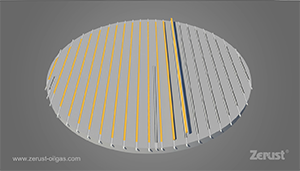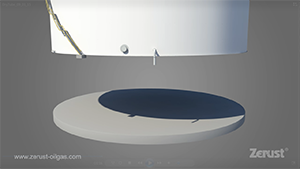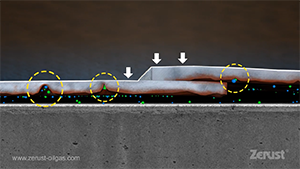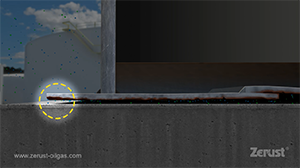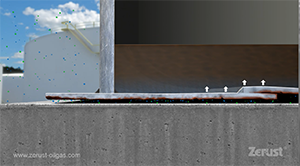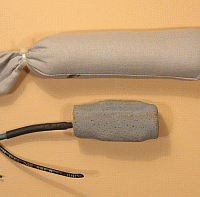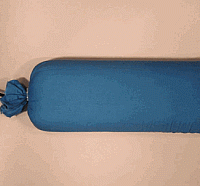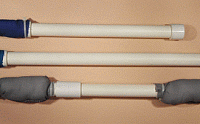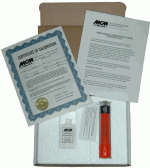Dry Tube System
Soil side corrosion, a major cause of tank bottom failures, is typically caused by the ingress of external contaminants and moisture through gaps and spaces around the annular chime space. Filling and emptying of the stored product cause the bottom plates to flex drawing in more moisture and external contaminants. This mix of corrosive contaminants and moisture creates pitting corrosion that can cause tank bottom holes well short of the design life of the asset.
This problem is seen in tanks with foundation pads of concrete, asphalt, or compacted sand.
Zerust Oil & Gas has a unique solution that protects the bottom plates. During tank construction or new floor installation shallow trenches are cut into the foundation and lined. Perforated PVC pipes are installed into these channels. The pipes have a special mesh sleeve to prevent clogging.
Electrical Resistance or ER probe tubes can also be installed at various points to provide bottom plate corrosion rate estimates.
The load bearing chime area of the channels is filled with concrete.
The rest of the channels are filled with sand.
The tank chime is sealed using proven sealants to prevent ingress of moisture and contaminants.
Mesh sleeves of Zerust’s proprietary Zerion inhibitor are installed into the tubes and the system is closed. Installation of the sleeves is quick and easy for both the initial application and subsequent replacements.
Vapor Corrosion Inhibitors or VCIs typically have vapor pressures higher than air. As they are released from the sleeves, they enter the tank underside space through the sand in the tube channels. The VCIs rise to the metal surface and neutralize contaminants.
This is a “dry” system pioneered by Zerust and no water is needed.
ER probes are positioned between VCI tube channels and close to the tank bottom. The VCI vapors permeate throughout the SSB space and protect the ER probes as well, demonstrating the effectiveness of the VCI. This is seen in ER probe readings that are neutral indicating minimal corrosion.
ER probes can be located at strategic points under the tank bottom. ER probe cables are safely secured in a casing outside the ring wall to enable readings to be taken while the tank is in service.
VCI molecules will protect the underside of the tank bottom for many years in this closed environment.
The system can be easily accessed for monitoring and replenishment of the VCI sleeves.
Dry Tube System
Dry Tube System
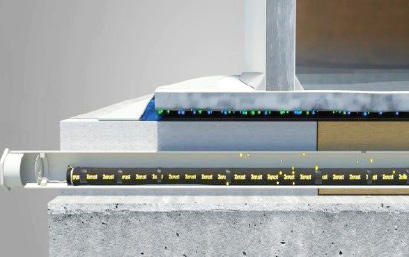
Additional information
Other Similar Products
Related products
-
- Electrochemical Devices Inc (EDI), Reference Electrodes, Cathodic Protection
Bagged Underground Reference Electrodes
- $0.00
- Add To Quote This product has multiple variants. The options may be chosen on the product page
-
- Electrochemical Devices Inc (EDI), Reference Electrodes, Cathodic Protection
Reduced Diameter Underground Reference Electrodes
- $0.00
- Add To Quote This product has multiple variants. The options may be chosen on the product page
-
- Cathodic Protection, M.C. Miller, Reference Electrodes
IonX Portable Electrodes
- $0.00
- Add To Quote This product has multiple variants. The options may be chosen on the product page
